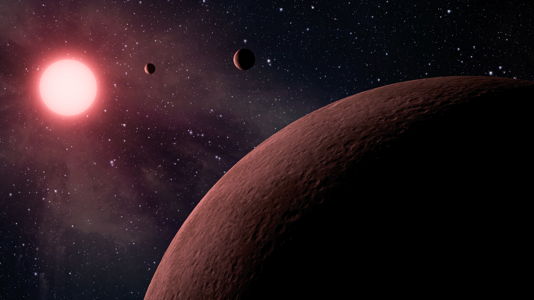Small Stars with Small Planets and Big Consequences

Speaker(s): Philip Muirhead
With the success of NASA’s Kepler Spacecraft, extrasolar planet science has entered a new era. Prior to Kepler’s launch exoplanet science was primarily concerned with gas-giant exoplanets, since gas giants comprised the majority of discoveries, numbering in the hundreds. NASA’s Kepler Mission has since discovered thousands of exoplanets with many of them terrestrial-sized. Of particular interest are terrestrial exoplanets orbiting low-mass stars, which are roughly 1/10 to 1/2 the mass of Sun. Low-mass stars dominate stellar populations, so understanding the prevalence of terrestrial exoplanets orbiting low-mass stars, life-harboring or otherwise, is crucial to understanding their prevalence in the Universe. I will present a ground-based observation program to characterize low-mass stars with exoplanets discovered by the Kepler Spacecraft, and our identification of the three smallest exoplanets detected to date: Kepler 41 b, c and d (formerly KOI 961 b, c and d). The program uses a fully-cryogenic infrared spectrograph built by myself and others and deployed on the 200-inch Hale Telescope at Palomar Observatory in Southern California.
Reading for the pre-talk discussion and a short Nature blurb to be held in the Aviation Room over lunch on the day of the colloquium. Dr. Muirhead will join us for the discussion, so read up and bring your questions!
“